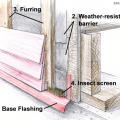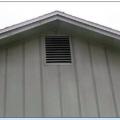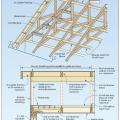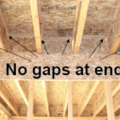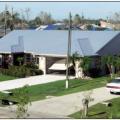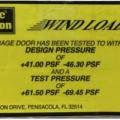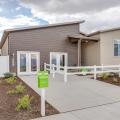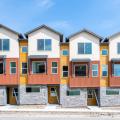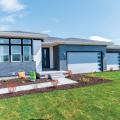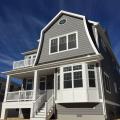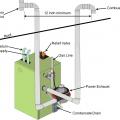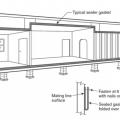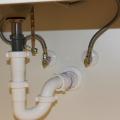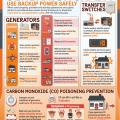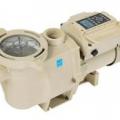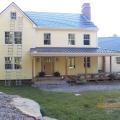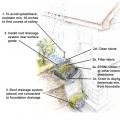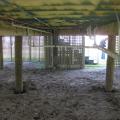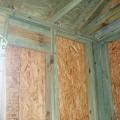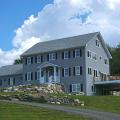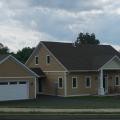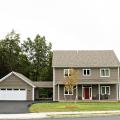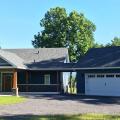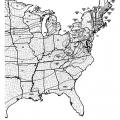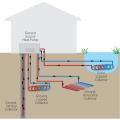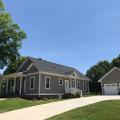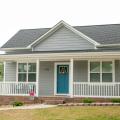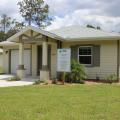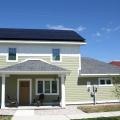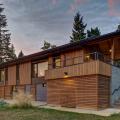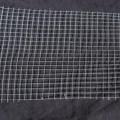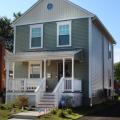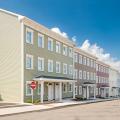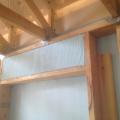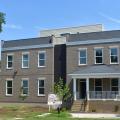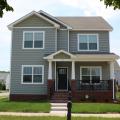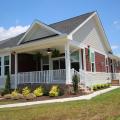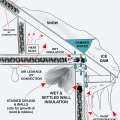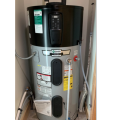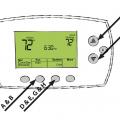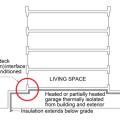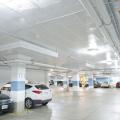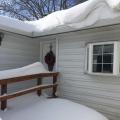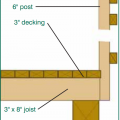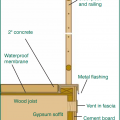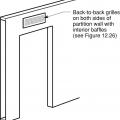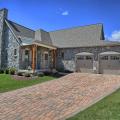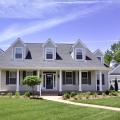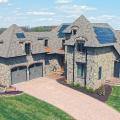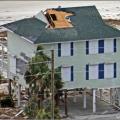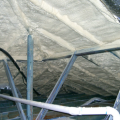Showing results 1401 - 1500 of 4973
Furring strips provide drainage gap behind lap siding; screen is added at bottom and top to prevent entry of insects and wildfire embers.
Gable end vents allow in wind-driven rain because pressures that develop between the outside surface of the wall and the inside of the attic are sufficient to drive water uphill several inches.
Gable-end bracing detail; nailing schedule, strap specification, brace spacing, and overhang limits should be adapted for the applicable basic wind speed.
Gaps at shared common walls can be a significant source of air leakage in multi-family buildings
Gaps between garage and conditioned space are properly sealed by carefully cutting and then caulking wood sections to fit between trusses above shared walls.
Garbett Construction built this multifamily home in the cold climate in Salt Lake City, UT, and certified it to DOE Zero Energy Ready Home specifications in 2018.
Garbett Construction built this production home in the cold climate in Greenville, SC, and certified it to DOE Zero Energy Ready Home specifications in 2017.
Garbett Construction built this production home in the cold climate in Park City, UT, and certified it to DOE Zero Energy Ready Home specifications in 2020.
Garbett Construction built this production home in the cold climate in West Jordan, UT, and certified it to DOE Zero Energy Ready Home specifications in 2018.
Garbett Homes built this attached housing in the cold climate in Park City, UT, and certified it to DOE Zero Energy Ready Home specifications in 2021.
Garbett Homes built this custom spec home in the cold climate in Cottonwood Canon, UT, and certified it to DOE Zero Energy Ready Home specifications in 2016.
Garbett Homes built this production home in the cold climate in Salt Lake City, UT, and certified it to DOE Zero Energy Ready Home specifications in 2013.
Garbett Homes built this production home in the cold climate in South Salt Lake, UT, and certified it to DOE Zero Energy Ready Home specifications in 2019.
Garbett Homes built this production home in the cold climate in West Jordan, UT, and certified it to DOE Zero Energy Ready Home specifications in 2021.
Garden State Modular built this custom for buyer home in the mixed-humid climate in Lavallette, NJ, and certified it to DOE Zero Energy Ready Home specifications in 2017.
Gardner Custom Homes built this custom for buyer home in the mixed-dry climate in Prescott Valley, AZ, and certified it to DOE Zero Energy Ready Home specifications in 2020.
Gardner Custom Homes built this custom spec home in the mixed-dry climate in Prescott Valley, AZ, and certified it to DOE Zero Energy Ready Home specifications in 2019.
Gas sensors are used for gas leak detection and carbon monoxide detection
Glass blocks allow in daylight while maintaining privacy and also provide protection against high winds and floods.
Glastonbury Housesmith built this custom home in the cold climate in South Glastonbury, CT, and certified it to DOE Zero Energy Ready Home specifications in 2015.
Good water management practices like sloping grade away from house, and installing gutters, perimeter drain pipe, a capillary break, and free-draining soils or drainage mat protect the foundation from water saturation.
Green Coast Enterprises built this New Orleans home on piers so that the floor is 1 foot above the base flood level; borate treated framing and closed-cell spray foam insulation add to the home's moisture resistance.
Green Coast Enterprises uses termite-resistant borate pressure-treated lumber throughout its homes in New Orleans.
Green Extreme Homes in partnership with Carl Franklin Homes built this affordable home in the hot-humid climate in Garland, TX, and certified it to DOE Zero Energy Ready Home specifications in 2014.
Green Phoenix Development built this custom spec home in the cold climate in Weston, MA, and certified it to DOE Zero Energy Ready Home specifications in 2020.
Greenhill Contracting built this 3,912-ft2 house in New Paltz, New York, to the performance criteria of the U.S. Department of Energy Zero Energy Ready Home (ZERH) program in 2016.
Greenhill Contracting built this 4,190-ft2 house in Esopus, New York, to the performance criteria of the U.S. Department of Energy Zero Energy Ready Home (ZERH) program in 2016
Greenhill Contracting built this 4,454-ft2 home in the cold climate of Esopus, New York, to the performance criteria of the DOE Zero Energy Ready Home program in 2015.
Greenhill Contracting built this custom for buyer home in the cold climate in Newburgh, NY, and certified it to DOE Zero Energy Ready Home specifications in 2019.
Greenhill Contracting built this production home in the cold climate in Esopus, NY, and certified it to DOE Zero Energy Ready Home specifications in 2014.
Ground Snow Loads for the United States (eastern), from 2021 IRC, Figure R301.2 (4)
Ground Snow Loads for the United States (western), from 2021 IRC, Figure R301.2 (3)
Gutters and downspouts direct rainwater down and away from buildings to keep building walls and foundations drier
Gypsum board is installed behind the bathtub before the tub is installed and all seams are sealed
Habitat for Humanity built this affordable home in the cold climate in Kalamazoo, MI, and certified it to DOE Zero Energy Ready Home specifications in 2018.
Habitat for Humanity built this affordable home in the mixed-humid climate in Hickory, NC, and certified it to DOE Zero Energy Ready Home specifications in 2018.
Habitat for Humanity of Catawba Valley built this affordable home in the mixed-humid climate in Hickory, NC, and certified it to DOE Zero Energy Ready Home specifications in 2017.
Habitat for Humanity of Catawba Valley built this affordable home in the mixed-humid climate in Hickory, NC, and certified it to DOE Zero Energy Ready Home specifications in 2019.
Habitat for Humanity South Sarasota Co. built this affordable home in the hot-humid climate in North Port, FL, and certified it to DOE Zero Energy Ready Home specifications in 2020.
Habitat for Humanity South Sarasota County built this affordable home in the hot-humid climate in Nokomis, FL, and certified it to DOE Zero Energy Ready Home specifications in 2015.
Habitat for Humanity South Sarasota County built this affordable home in the hot-humid climate in North Port, FL, and certified it to DOE Zero Energy Ready Home specifications in 2018.
Habitat for Humanity South Sarasota County built this affordable home in the hot-humid climate in North Port, FL, and certified it to DOE Zero Energy Ready Home specifications in 2021.
Habitat for Humanity, Grand Traverse Region, built this affordable home in the cold climate in Traverse City, NC, and certified it to DOE Zero Energy Ready Home in 2016.
Hammer and Hand built this custom home in the marine climate it Portland, OR, and certified it to DOE Zero Energy Ready Home specifications in 2015.
Hand tools for cutting fiber board sheets include a knife, straight edge, and color-coded edge-cutting tools
Hardware cloth, also known as wire mesh, can be used to prevent rodents from entering the home
Hartford Habitat for Humanity built this affordable home in the cold climate in Hartford, CT, and certified it to DOE Zero Energy Ready Home specifications in 2020.
Having both low and high ventilation openings is necessary to promote airflow from the stack effect
Haynes Construction built this affordable housing in the cold climate in Meriden, CT, and certified it to DOE Zero Energy Ready Home specifications in 2021.
Headers over windows on non-load-bearing walls are open to allow room for insulation.
Health-E Community Enterprises of Virginia built this multifamily home in the mixed-humid climate in Richmond, VA, and certified it to DOE Zero Energy Ready Home specifications in 2018.
Health-E-Community Enterprises of Virginia built this custom for buyer home in the mixed-humid climate in Hampton, VA, and certified it to DOE Zero Energy Ready Home specifications in 2019.
Health-E-Community Enterprises of Virginia built this production home in the mixed-humid climate in Richmond, VA, and certified it to DOE Zero Energy Ready Home specifications in 2017.
Health-E-Community Enterprises of Virginia, Inc. built this custom spec home in the mixed-humid climate in Toano, VA, and certified it to DOE Zero Energy Ready Home specifications in 2016.
Healthy Communities built this production home in the mixed-humid climate in Williamsburg, VA, and certified it to DOE Zero Energy Ready Home specifications in 2021.
Healthy Communities built this production home in the mixed-humid climate in Williamsburg, VA, and certified it to DOE Zero Energy Ready Home specifications in 2020.
Healthy Communities built this production home in the mixed-humid climate in Williamsburg, VA, and certified it to DOE Zero Energy Ready Home specifications in 2014
Heat loss through the roof of a home in a cold climate zone leads to snow melting to form ice dams.
Heat pump water heater is installed in the interior closet of a multifamily dwelling unit
Heated air flow is produced when the heating cycle is energized (set thermostat to “heat”)
Heated or partially heated garages with podium decks should be thermally isolated from both ambient exterior space and interior conditioned space by insulating the interior of the garage walls and ceiling and extending the insulation below grade.
Heated recirculation plenum spaces can be installed in parking garages in cold climates to prevent pipes from freezing and warm the floor of occupied space directly above the garage.
Heavy metal flashing protects the deck timbers and separates them from the wall at the wall-deck connection which is vulnerable to both ember entrapment and water damage.
Heavy timber deck construction uses slow burning thick timbers to reduce the flammability of the deck.
Heavy timber deck construction uses slow burning thick timbers to reduce the flammability of the deck.
Heavy-gauge metal strapping can be used to secure water heaters and other appliances
Heirloom Design Build built this custom home in the mixed-humid climate in Atlanta, GA, and certified it to DOE Zero Energy Ready Home specifications in 2015.
Hidden sheet metal baffles prevent the transmission of light and sound through the transfer grille
High Performance Homes built this custom for buyer home in the cold climate in Gettysburg, PA, and certified it to DOE Zero Energy Ready Home specifications in 2017.
High Performance Homes built this custom for buyer home in the mixed-humid climate in Easton, MD, and certified it to DOE Zero Energy Ready Home specifications in 2019.
High Performance Homes built this custom for buyer home in the mixed-humid climate in Westminster, MD, and certified it to DOE Zero Energy Ready Home specifications in 2018.
High Performance Homes built this production home in the cold climate in Gettysburg, PA, and certified it to DOE Zero Energy Ready Home specifications in 2015.
High winds pulled the asphalt shingles and sheathing panels off this coastal home, although storm shutters protected the windows
High-density closed-cell spray foam insulates the attic of this home in New Orleans.
